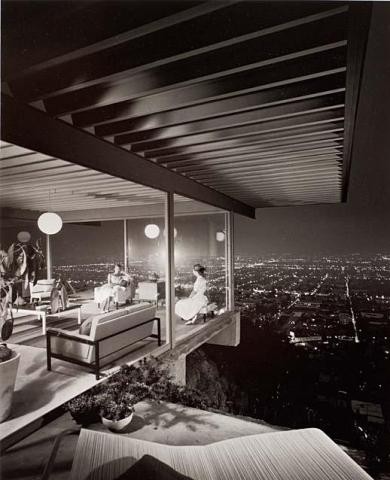California Design, 1930–1965
01 Oct 2011 - 03 Jun 2012

Julius Shulman (1910–2009), photographer, Pierre Koenig, architect, Stahl House (Case Study House #22), Los Angeles, 1960, printed later, Gelatin-silver print, LACMA, Gift in honor of Robert Sobieszek, M.2005.191.
CALIFORNIA DESIGN, 1930–1965
"Living in a Modern Way"
1 October, 2011 - 3 jUNE, 2012
This exhibition will be the first major study of California mid-century modern design. With over 350 objects including furnishings, film, graphic design, industrial design, fashion, and jewelry, the exhibition will explore how California design shaped American material culture just before and after World War II, examining the roots of California modernism, the contributions of émigrés, the postwar transition to a Cold War economy, and the marketing and promotion of California throughout the US and the world. The exhibition begins with the development of a distinctive California modernism in the 1930s and the contributions of émigrés such as Kem Weber, Paul Frankl, R.M. Schindler, and Richard Neutra. It then explores the design innovations made possible by the conversion of WWII technologies to peace-time use (such as Charles and Ray Eames' work for the U.S. Navy, which resulted in their famous fiberglass and molded plywood chairs after the war.) The largest section of the show, "Living California Modern," focuses on the home, famously characterized by open plans and indoor/outdoor living. Created for a casual lifestyle, new types of furnishings were often produced by designers whose work, still largely unknown, will be seen for the first time by museum audiences. The exhibition's last section demonstrates—through exhibitions, magazines, shops, and film—how "The California Look" was disseminated throughout America and the world. The exhibition's goal is to elucidate the 1951 quote from designer Greta Magnusson Grossman that is part of the exhibition's title: California design "is not a superimposed style, but an answer to present conditions... It has developed out of our own preferences for living in a modern way."
"Living in a Modern Way"
1 October, 2011 - 3 jUNE, 2012
This exhibition will be the first major study of California mid-century modern design. With over 350 objects including furnishings, film, graphic design, industrial design, fashion, and jewelry, the exhibition will explore how California design shaped American material culture just before and after World War II, examining the roots of California modernism, the contributions of émigrés, the postwar transition to a Cold War economy, and the marketing and promotion of California throughout the US and the world. The exhibition begins with the development of a distinctive California modernism in the 1930s and the contributions of émigrés such as Kem Weber, Paul Frankl, R.M. Schindler, and Richard Neutra. It then explores the design innovations made possible by the conversion of WWII technologies to peace-time use (such as Charles and Ray Eames' work for the U.S. Navy, which resulted in their famous fiberglass and molded plywood chairs after the war.) The largest section of the show, "Living California Modern," focuses on the home, famously characterized by open plans and indoor/outdoor living. Created for a casual lifestyle, new types of furnishings were often produced by designers whose work, still largely unknown, will be seen for the first time by museum audiences. The exhibition's last section demonstrates—through exhibitions, magazines, shops, and film—how "The California Look" was disseminated throughout America and the world. The exhibition's goal is to elucidate the 1951 quote from designer Greta Magnusson Grossman that is part of the exhibition's title: California design "is not a superimposed style, but an answer to present conditions... It has developed out of our own preferences for living in a modern way."
